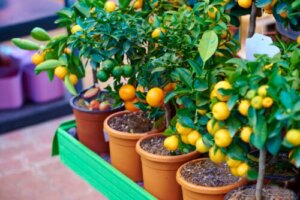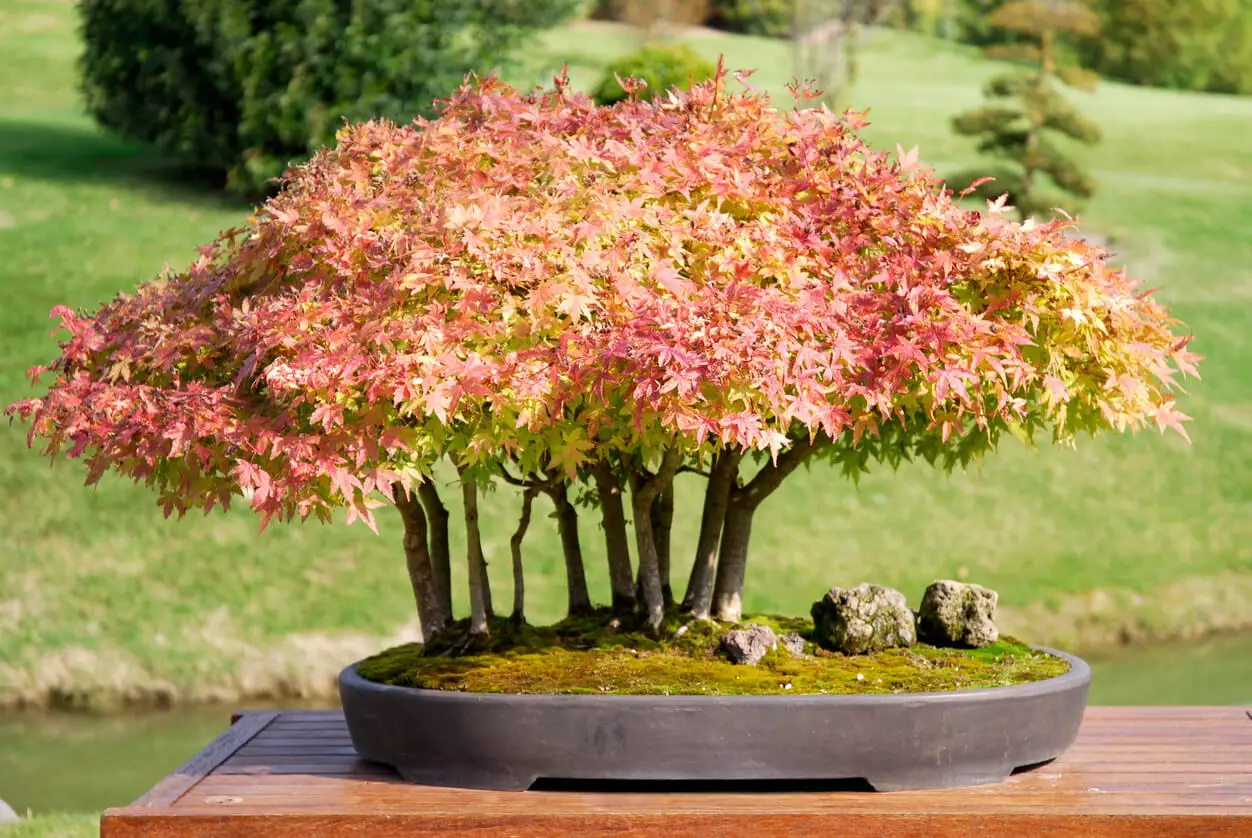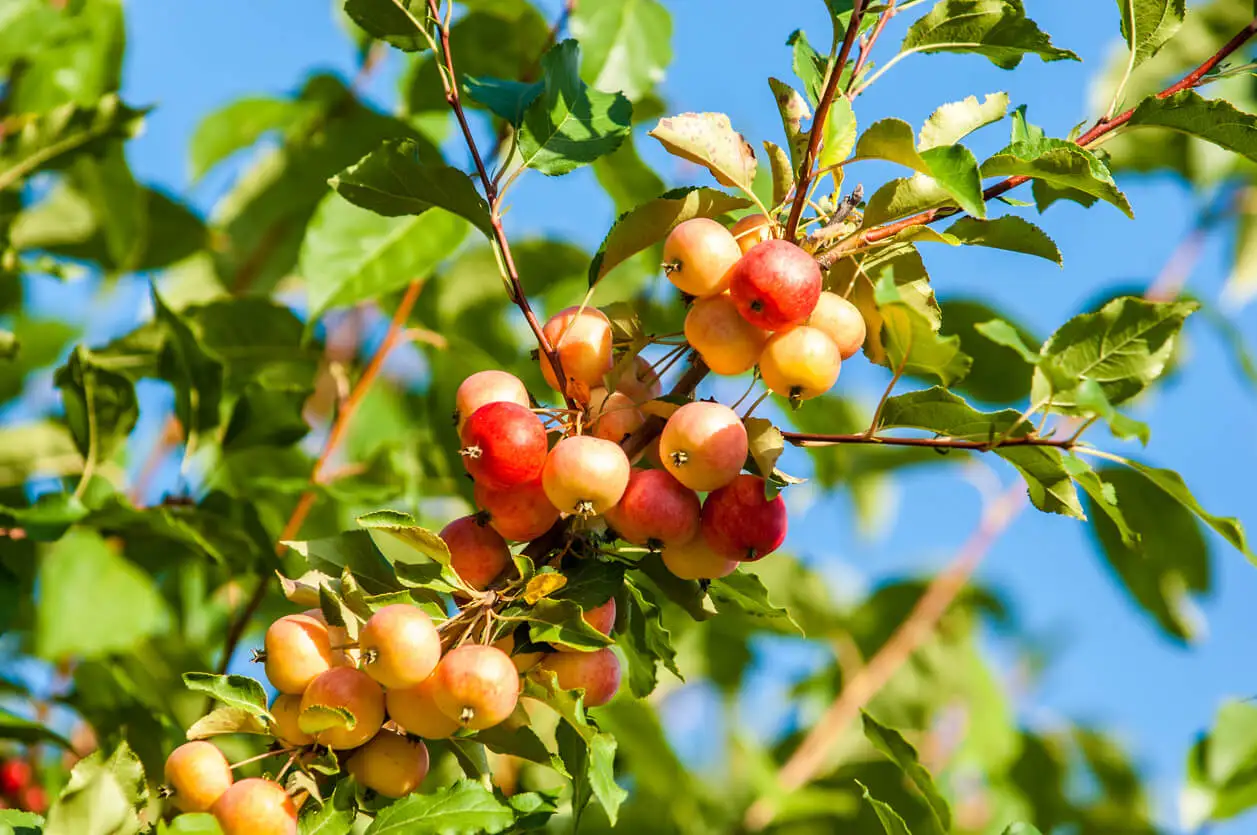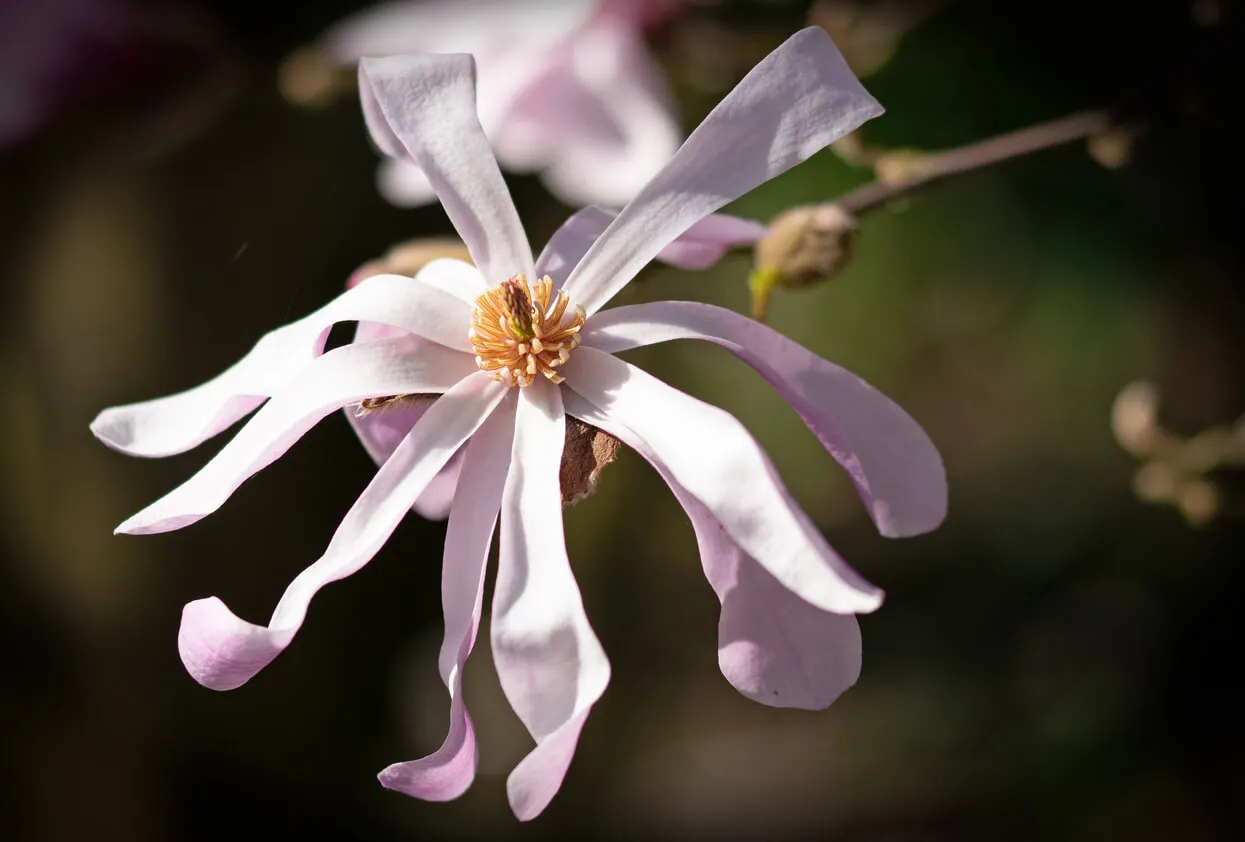Best 9 Small Trees to Plant in Pots and Their Care

Small trees for planting in pots are a great option when it comes to gardening. It’s like having a mini-forest, but without planting directly in the ground.
Although most species grow best in the ground, in the case of potted specimens they have the qualities to survive and bear fruit in a container. You get the same advantages from them that you gain from common planting trees; the difference is in the convenience of caring for them and the ability to move them. Let’s find out more about this botanical issue.
Why opt for small trees for container planting?
Generally, trees are at least 5 meters tall and branch out from the ground. The elevations could multiply, generating large specimens. However, there are trees with a relatively slow growth rate that tolerate pruning and are suitable for planting in pots.
When you grow shrubs of moderate dimensions, you add a decorative touch, since these are plants that produce colorful flowers and fruits, in addition to the visual effect achieved with the variation in height and leafiness. In addition, they function as zoning elements in isolated areas, perfuming the environment and providing style.
In favor of this type of vegetation, research developed by ecologists from Florida International University and reviewed by PHYS ORG, explains that regular trees absorb carbon dioxide from the atmosphere and store it in their leaves and roots. In the case of small trees, they found that they store carbon for an average of 74 years, while large trees do the same job, but in an average of 54 to 57 years. So the “dwarfs” live longer and grow slower.
We think you may also like to read this article: The Best Trees and Shrubs for Privacy in the Garden
The best small trees to plant in pots
The variety of slow-growing trees is wide. Here are 9 species that are ideal for becoming the focal point of the garden while growing in a pot.
1. Japanese maple
The Missouri Botanical Garden points out that the Acer palmatum or Japanese maple is a small tree that grows up to 25 inches and infrequently touches 40 inches. It’s sought after for small gardens and thrives in containers thanks to slow growth and regular pruning. Bonsai enthusiasts find the Japanese maple to be one of their favorite specimens.

2. Lemon trees
To plant lemon trees in a pot is a time-tested act, because in the past, wealthy families often kept lemon plants in their homes.
Generally these trees are small; however, very old lemon trees can exceed 3 meters.
They show many thick and thorny branches, as well as a round and wide crown. The cultivation is by seeds, the tree flowers all year round, and lemons trees smell amazing.
3. The “love tree”
This tree, whose scientific name is Cercis siliquastrum, has a medium-low growth speed. It’s a deciduous species with round, green leaves and pink flowers that sprout in clusters from the branches themselves.
It’s the slow development that makes the tree of love an ideal specimen for pots. And with regular pruning, you can keep it at your desired size.
Other nomenclatures for these trees are “cyclamen,” “crazy carob,” and “Judas tree.”
4. Wild apple trees
In its “dwarf” variety, the apple tree rises 1 to 2 meters tall, while “semi-dwarf” trees range from 3 to 4 meters and standard apple trees range from 6 to 9 meters, according to estimates by the University of Iowa Natural Resources Administration.
Apple blossoms bloom in spring and fruit in fall. Their size is favorable for growing in containers, especially when threats of frost end, suggests the University of Minnesota Yard and Garden Extension.

5. Italian cypress
Cupressus sempervirens, or Italian cypress, is a graceful and tall columnar plant, due to its rocky mountain origins. But you can control growth and give it a pared-down look for containers. North Carolina State University Gardening Extension comments that the more mature the tree, the slower or almost nonexistent the growth.
6. Wild olive trees
The scientific name for this type of olive tree is Olea europea sylvestris and it’s a small shrub. The trunk is short, the appearance is twisted, it flowers in spring and its fruit is the olive.
Although it withstands temperatures down to -7 °C, having these trees in pots is a good idea to move them to a safe area during prolonged frosts.
7. Peach trees
The peach tree (Prunus persica L. Batsch) is a bushy tree that does not exceed 6 meters in height, with smooth bark and green leaves.
To plant this fruit plant at home, you need a container or pot of considerable size, but not so bulky as to make it difficult to move. Prepare a drain with stones in the bottom or raise the pot onto legs to minimize the chances of waterlogging, as these trees require daily watering.
8. Laurel trees
According to the Wisconsin Division of Horticulture, you can plant laurel as a single-stemmed tree or a multi-stemmed shrub. They lend themselves to topiary art or standard cultivation. Just these traits alone make it a perfect candidate for container planting!
In fact, they thrive without difficulty in pots, provided you place them in a sunny area and supply a substrate that speeds water drainage. Among the benefits of the laurel is the aroma of its leaves, used in cooking recipes.
They also function as decorative elements. The flowering is in spring, season that adorns with its yellow buds which then turns into violet.
Like this article? We think you may also like to read: 4 Fruit Trees You Can Grow at Home
9. Star magnolia
Growth of these shrubs is medium to fast, increasing in size from 13 to more than 24 inches per year, reports the Arbor Day Foundation. This class of magnolias is more compact, allowing for convenient planting in containers. They have romantic flowers, with star-shaped petals and exquisite fragrance, which adorn a dense tree with green leaves.

Caring for small trees planted in pots
Pots for planting small trees need to be spacious so that the roots work properly and the supply of nutrients is evened out. To care for specimens in containers, bear in mind the following tips:
- Depending on the type of plant, locate it where it receives the appropriate solar radiation.
- Comply with regular pruning and cleaning to prevent diseases and pests.
- At the moment of acquiring the tree, make sure to consult with specialists about its specific maintenance.
- Replace the top layers of compost with a loam-based fertilizer in the spring.
- After at least 4 years or when you notice that the specimen exceeds the proportions, change it to another pot.
- Trees in pots may dry out faster than in the ground, so choose a suitable container to control humidity.
- If you live in a warm region, you can keep citrus specimens outside in pots all year round. However, if you live in a region with winter nights below 10 °C, you will have to store them.
Trees that are compatible with the local climate will always do better.
How do you know you’re actually bringing home small trees to plant in pots?
Dwarf coniferous plants are those genetically programmed to grow slowly and stay small. However, they add that the term “dwarf” is relative, so don’t buy a dwarf tree without asking about the size it will be when it’s fully grown.
The goal is to know the characteristics of the shrub from the start and plan your planting based on the dimensions. With this important information, you can determine if you will really take home a tree that’s suitable for a pot. So, do you already know which species of potted tree you’re going to plant in your garden at home?
All cited sources were thoroughly reviewed by our team to ensure their quality, reliability, currency, and validity. The bibliography of this article was considered reliable and of academic or scientific accuracy.
- Acer palmatum. Jardín Botánico de Missouri. Estados Unidos. https://www.missouribotanicalgarden.org/PlantFinder/PlantFinderDetails.aspx?taxonid=275408#:~:text=Acer%20palmatum%2C%20commonly%20called%20Japanese,infrequently%20to%2040′)%20tall.
- Bahia dulce, noble laurel. División de Extensión de Horticultura de Wisconsin. Estados Unidos.
https://hort.extension.wisc.edu/articles/sweet-bay-laurus-nobilis/ - Cupressus sempervirens. Extensión de Jardinería de la Universidad Estatal de Carolina del Norte. https://plants.ces.ncsu.edu/plants/cupressus-sempervirens/
- Coníferas enanas y especiales. Plant Talk Colorado ™. Extensión de la Universidad Estatal de Colorado. Estados Unidos. https://planttalk.colostate.edu/planttalk-coloradotm-espaol/arboles-arbustos-enredaderas/1704-coniferas-enanas-y-especiales/#:~:text=con%C3%ADferas%20enanas%20es%20un%20t%C3%A9rmino,crecer%20lentamente%20y%20quedarse%20peque%C3%B1os.
- González E. Los árboles pequeños tienen un gran impacto en la lucha contra el cambio climático. Science X. Reino Unido; 2019. https://phys.org/news/2019-01-small-trees-big-impact-climate.html
- Gutiérrez N. Durazno. Agricultura y Desarrollo Rural. México; 2014. https://sader.jalisco.gob.mx/catalogo-plantas/durazno#:~:text=Es%20un%20%C3%A1rbol%20caducifolio%20que,el%20otro%20%C3%A1rbolcuando%20los%20sistemas
- Hoover E. Cultivo de manzanas en el jardín de la casa. Extensión de la Universidad de Minnesota. Estados unidos; 2021. https://extension.umn.edu/fruit/growing-apples#planting-238111
- Limonero. Citrus limon [Rutaceae]. Región de Murcia Digital. España. https://www.regmurcia.com/servlet/s.Sl?sit=c,365,m,1050&r=ReP-5154-DETALLE_REPORTAJESABUELO#:~:text=El%20limonero%20es%20un%20%C3%A1rbol,de%20copa%20amplia%20y%20redondeada.
- Magnolia estrellada. Fundación del Día del Árbol. Estados Unidos. https://www.arborday.org/trees/treeguide/TreeDetail.cfm?ItemID=864
- Manzana. Administración de Recursos Naturales. Universidad de Iowa. Estados Unidos. https://naturalresources.extension.iastate.edu/forestry/iowa_trees/trees/apple.html
- Olea europea. Arbolapp. https://www.arbolapp.es/especies/ficha/olea-europaea/
- Sánchez M. Cercis Siliquastrum – Árbol del amor. La cultura del árbol. Real Jardín Botánico. https://www.rjb.csic.es/jardinbotanico/ficheros/documentos/pdf/pubinv/MSG/Cercis_siliquastrum.pdf
- Topiario. Real Academia Española. https://dle.rae.es/topiario
This text is provided for informational purposes only and does not replace consultation with a professional. If in doubt, consult your specialist.








